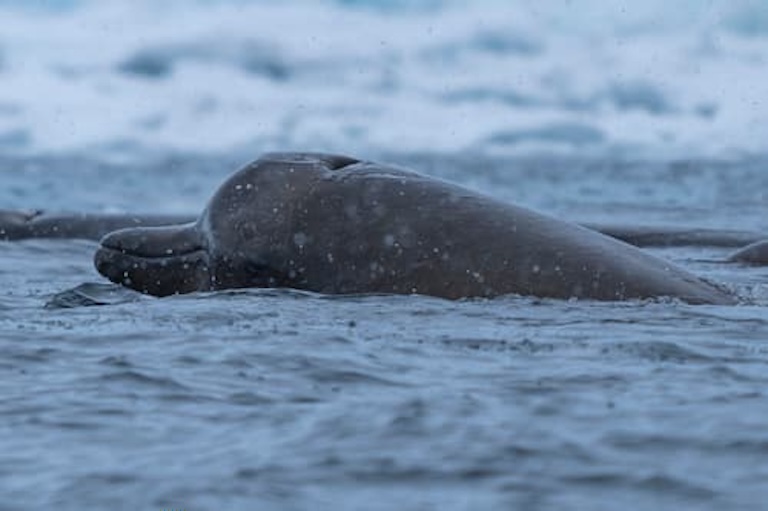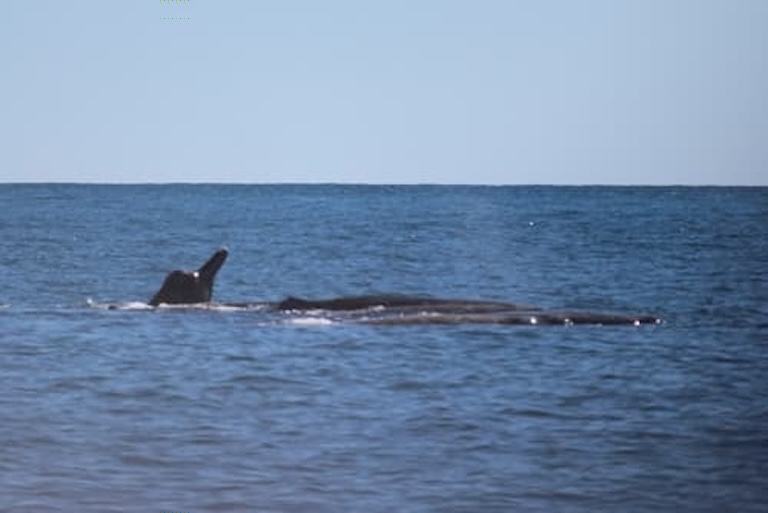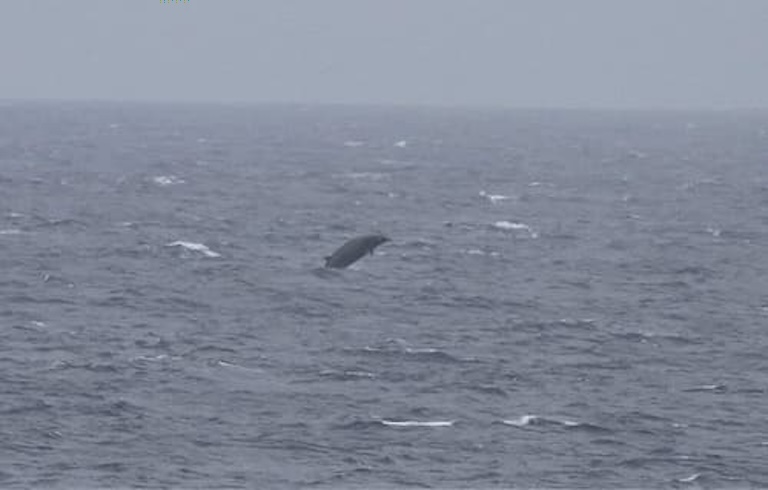Arnoux’s Beaked Whale Profile
It’s a sad fact that much of what we know about life in the ocean comes as a result of our fixation with killing it. Whale species were traditionally hunted with scientific precision by understanding their migratory routes and social behaviours.
But there are a whole bunch of smaller whales that weren’t of much interest to the industry and so remained more or less ignored by science. And even though the Golden Age of whaling has long passed, science still hasn’t caught up with its investigation of what was left behind.
Animals like the beaked whales, and in particular, the Arnoux’s beaked whale: an animal whose name still elicits a universal shrug from the zoological community.

Arnoux’s Beaked Whale Facts Overview
| Habitat: | Cold, Antarctic waters, open ocean |
| Location: | Southern Ocean |
| Lifespan: | Unknown |
| Size: | Up to 12m long |
| Weight: | 8,200kg (9 tons) |
| Colour: | Dark to light grey |
| Diet: | Probably squid and small fish |
| Predators: | Orca |
| Top Speed: | Unknown |
| No. of Species: | 1 or less |
| Conservation Status: | Least Concern, IUCN |
We know so little about this whale that it might not even be its own species.
The trouble is, Antarctica is cold and far away, and it looks so much like a Baird’s whale we might as well just assume that it is one.
But some distinct mysteries set it apart. Why are they covered in scars? Why are they spending so much time beneath the ice? How do they tell each other apart when they all look the same?
This species of whale is the most disrespected whale of all the ones we never mass-slaughtered. And that’s a pity because if we cared to put in the time, we’d probably gain a lot from studying this unusual, intelligent predator.
Interesting Arnoux’s Beaked Whale Facts
1. Beaked whales all look the same
This is a classic case of speciesism from the human side, but researchers find it very difficult to tell most of the beaked whale species apart.
It’s quite possible that beaked whales struggle with this, too, and some humans think that they have evolved unique tusks between species as a way of making sure they’re shagging the right person during the mating season.
The similarities really compound the struggle of studying an already-elusive animal and make it so that we don’t really know what’s going on with them at a species level at all.
Baird’s beaked whales look so similar to the Arnoux’s beaked whale, that some say they’re likely just the same animal in a different place (their location is the only way we can tell one from the other), but genetic evidence suggests that this is not true and we’re just being bigoted.
Still, they’re hard to find, and as a result, we don’t really know much about their behaviours.

2. They’re highly adapted to talk
While we hardly ever see them alive, we can infer a lot from the shape of their corpses, of which we have many samples because they tend to strand themselves on beaches.
They have a prominent melon, which is quite a rude thing to say to their faces but gives us very useful information on their ability to communicate. The melon of toothed whales is the bulb of tissue that’s used to condense and resonate various sounds for communication and for exploring their surroundings.
Like dolphins, this will be used for echolocation and vocalisations, which have been recorded as a range of clicks, whistles and squeaks, and suggests they’re highly social and intelligent.
3. They’re probably deep divers
From monitoring their dive times, researchers have assumed that these whales likely get down to chilly depths of around a kilometre on particularly long dives.
Dive times of up to 70 minutes have been recorded, so the depth is an inference from this, rather than a measure of the actual distance dived, but the whales have been directly witnessed gathering in groups of up to 80, taking breaths for around eight minutes, then diving for 10 to 45 minutes at a time on average. 1
4. They have scars
There rest of their behaviour is harder to establish, though the older they get, the more scars they present with, which suggests a very amorous social behaviour of some sort or another.
Cuddling with tusks and no arms can be a scratchy affair in theory, but it’s never been seen in the wild, so we don’t know whether these scars are from love or war.
Some individuals have been seen drowning when trapped under closing ice in the shelf, but it’s unclear how common this is, too, or whether ice can contribute to crowding or scarring events.
The scars are more or less parallel, which makes them a likely product of the tusks of the species, and both males and females have them.

5. We don’t know what they eat
Because we don’t follow these whales very well, much of what’s assumed about the species comes from comparing it to its similar-looking species, the [Baird’s beaked whale].
This strategy might work, but just as the perils of basing all of Western psychology on North American college students are beginning to come to light, so too, assuming the nature of one species from an entirely different one might not be the most reliable approach.
But! It’s the best we’ve got so far, and for now, it’s assumed that these whales eat squid and fish, like their Bairdy cousins. However, their affinity for the pack ice of the Antarctic shelf region suggests they might be exploiting other resources entirely.
6. They’re not commercially significant
This is good news for the whale, and their species is listed as of Least Concern by the IUCN as a result, but we don’t know if their numbers are going up or down and we know far too little to be of much use in their conservation, should they need it.
This species has never been hunted to a significant degree, but they are vulnerable to drift nets and will come up as bycatch, though even to what extent this happens is not reported clearly.
They are prone to strandings, and loud acoustic sounds such as high-powered sonar are thought to be the culprit.
Other threats are commonplace in the ocean: the ingestion of plastics, entanglements in ghost nets, and the inevitable shift in ecosystem that will come from the warming of the Antarctic oceans, but the degree to which these issues will pose a threat to the species remains to be seen. 2
Arnoux’s Beaked Whale Fact-File Summary
Scientific Classification
| Kingdom: | Animalia |
| Phylum: | Chordata |
| Class: | Mammalia |
| Order: | Artiodactyla |
| Family: | Ziphiidae |
| Genus: | Berardius |
| Species: | Arnuxii |
Fact Sources & References
- “Berardius arnuxii Arnoux’s beaked whale”, Animal Diversity Web.
- “Arnoux’s Beaked Whale”, IUCN Red List.
